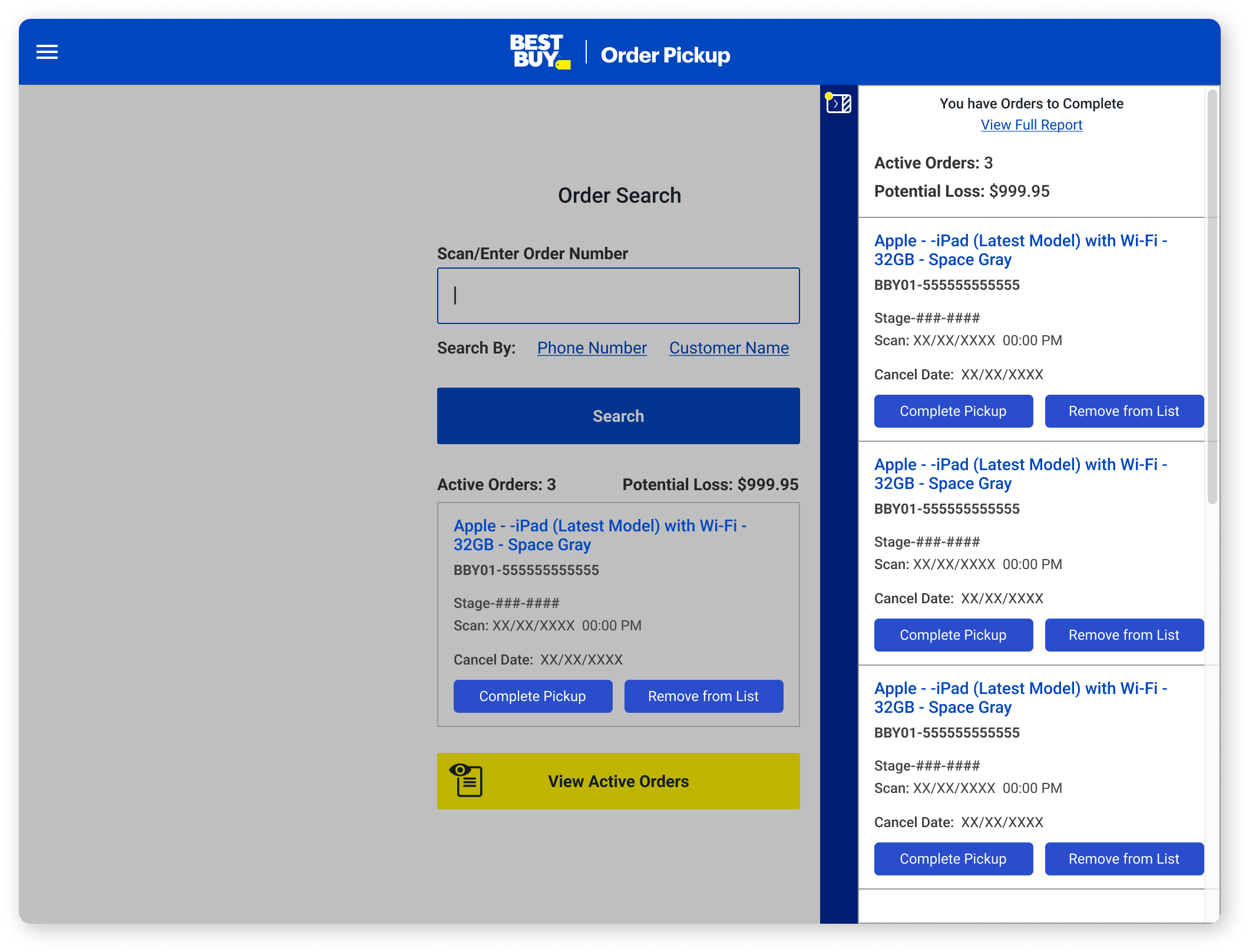
Reducing Shrink with Order Pickup
Problem
$5 million in shrink annually due to employees not closing in-store pickup orders properly 60% of the time
Strategy
identify and address issues in employee tools that are leading to confusion with order status or incomplete workflow
Timeline
8 weeks to design handoff
mid-June to mid-August 2022
Team
myself, Michael (intern), Ian (manager)
Nicole (product), Vikram (engineering), engineering, research, and store employees
Results
99% reduction in accidental shrink due to orders not be closed correctly
Discover
Context
There was a big problem with shrink, and the worst part was that it wasn’t coming from shoplifters.
It was coming from employees.
Well, it was coming from design and workflow flaws, to be exact.
The existing home screen and separate Active Order Report, along with the messaging and prompts throughout the workflow of closing active orders was the suspected culprit.
Store Visit: Richfield
An initial store visit and conversations with users helped to identify specific pain points with the existing tools.
-
Users commented that not enough was being done to visually differentiate active orders from closed orders.
-
The text within the app was not clear, especially at critical points in the workflow, leading to a lack of understanding the effects of actions being taken.
-
Visual and content differences across tools used by employees increased cognitive load and made errors more likely.
Whiteboard Meeting
These findings were shared with our Product and Engineering partners where possible causes were discussed.
-
Make it clear to users when an order is completed so that open orders that have been picked up by customers are properly closed and don’t end up contributing to shrink.
-
Surface both active and closed orders in a more visible way so that users are aware of their status and less likely to misunderstand it.
-
Remove ineffective elements like the yellow button on the home screen and improve the way risk is communicated throughout the workflow.
Define
Project Goals
Improve how order status is shown.
Utilize product layout more effectively.
Increase the consistency with other tools.
How might we improve the process of completing orders to lessen employee confusion and reduce shrink?
Develop
Version 1.0
Initially, a window on the home screen to populate the highest priority active order was added. The full list of active orders could be viewed within a side sheet.
Version 2.0
To better utilize the home screen layout, the window for priority active orders was shifted to the right half of the screen. Metrics showing potential store and employee loss were added.
Versions 3.0-3.4
Continued iterations of the home screen explored the placement of the Active Order Dashboard and the sorting, prioritization, and real estate given to active order cards with the removal of the side sheet in this version.
Versions 4.0-4.4
The condensed nature of the active order cards in previous iterations was addressed by “showing more for less” giving priority to fewer active orders and highlighting critical orders with a red border.
Further critique of the Active Order Summary led to it shrinking until eventually being integrated with the Active Order section.
Store Visit: Burnsville
A store visit to socialize the update was held, revealing some opportunities.
-
The consolidation of the Active Order Summary and Active Order List was introduced to users and feedback was collected.
-
The designs of active order cards were updated so they aligned with those of the Product Pickup Board, another tool that users utilize in the same environment.
-
A final check to make sure screen designs were aligned with store hardware which lead to a subtle screen size update.
Version 5.0
The final version addressed the tool consistency and hardware compatibility issues discovered in the store visit.
Deliver
The changes made to the home screen of Order Pickup addressed the issues that employee users were having with understanding the state of orders while alerting them to the potential risk of not closing them properly.
Quickly, accidental shrink was nearly eliminated and the project was deemed an overwhelming success.
99%
reduction in accidental shrink.





